by Wine Owners
Posted on 2021-11-22
For a couple of days at least the world felt normal again as the English wine trade returned en masse to Burgundy for the first time in two years. How wonderful it was to be back was the most prevalent sentiment and ‘ooh, aren’t the wines good’ the most repeated phrase. The Burgundians are a little more patient than their counterparts from Bordeaux and wait for a little over a year, as opposed to a few months, after harvest to show their wines to the world, making en primeur tastings that much more informative, and pleasant, so here’s a quick review of Burgundy 2020.
2020 was another very warm and dry year but the range in temperatures between night and day and the ongoing improvement and knowledge of how to handle the heat meant the vintage is a good one, a very good one. The whole winemaking process is more scientific and exacting than ever before and the attention to detail demonstrated by some winemakers is incredible. Whether it is more work in the vineyard, including the lighting of candles in the vineyards at four o’clock in the morning to stave off potential frost (or not as it turned out for Cyprien Arlaud of the eponymous domain in spring this year), harvesting earlier, new technology and/or machinery including a million-euro bottle washer machine (at Domaine Lorenzon in Mercurey), or organic or even bio dynamic farming these guys are giving themselves every chance of making great wine whatever mother nature throws their way. It was noticeable that bio dynamic farmers reported less loss of crop due to frost than others as their plants are healthier – at least that is what they say! Another technique favoured by some to avoid frost damage is to prune closer to springtime whereas traditionally pruning of the vines took place in November. This means they can control budding more closely and not leave the new buds exposed for longer. This has helped some growers enormously.
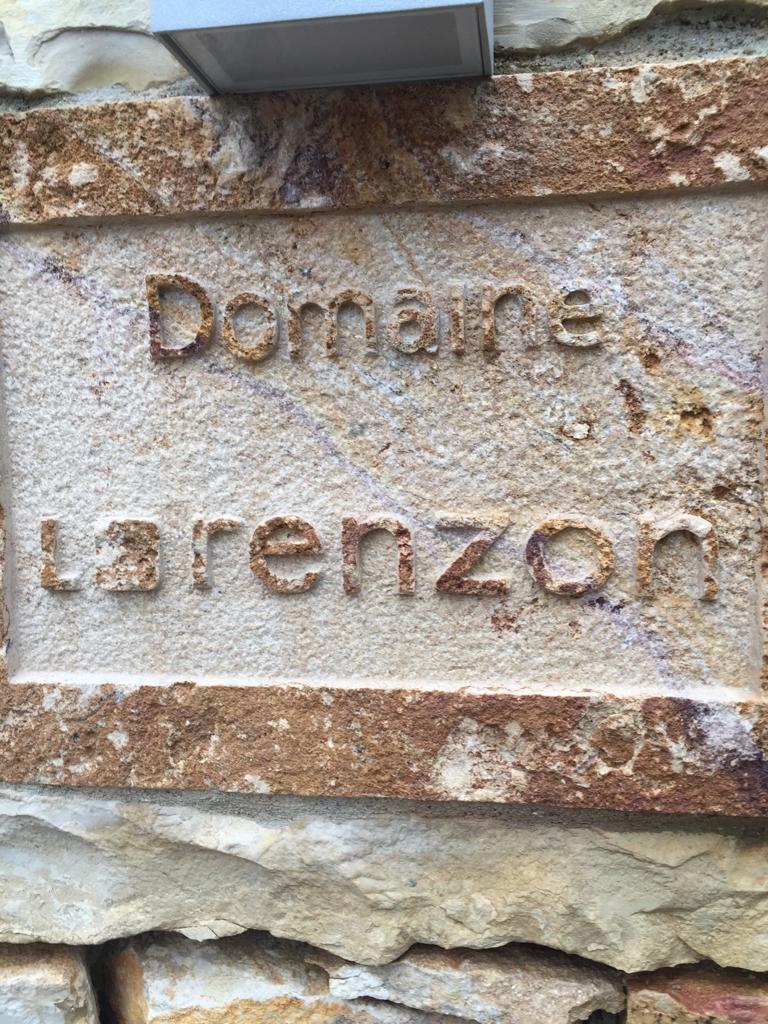
The devastating frosts of earlier this year (2021), particularly for Chardonnay, will be discussed repeatedly during the impending 2020 campaign in January, as growers will be factoring their lack of supply for next year into prices for this. Apart from the odd pause for breath Burgundy prices have been on the rise significantly for well over a decade now and there is no reason to suggest this will cease anytime soon.
There is just something very special about Burgundy; it appears there are just more aficionados plugged into this region than any other. Perhaps it is because it offers so many world class wines in both red and white, from two of the world’s favourite grape varieties, that no other region can compete with it in quite the same way. Release prices are going up and wines in the secondary market will continue to rise. Demand for all top end Burgundy is insane but the supply shortages of white coming up are going to impact prices heavily.
In brief, the whites from 2020 were picked early and characterised by mineral driven intensity and focus, not quite as fleshy as ‘17s, but fresh and zippy and generous too. Red berries were smaller than usual, with thick skins producing wines of good concentration and structure, bursting with fruit flavour and with early picking acidity was maintained.
Producers visited: Domaine Sauzet, Domaine Lorenzon, Domaine Chavy-Chouet, Domaine Ballot-Millot, Domaine Launay-Horiot, Domaine Duroché, Domaine Henri Magnien, Domaine Georges Noellat, Domaine Thibault Liger-Belair, Domaine Arlaud Pere et Fils, Domaine Marchand Tawse
For me the standouts were Sauzet, Duroché and Arlaud.
Bottle of the trip: Chambolle Musigny, Domaine G. Roumier 2017
Take aways from the trip: The quality of Thibault Ligier-Belair’s Morgon and how few people in the wine trade have ever been to Beaujolais!
The epic combination of Epoisses and red Burgundy (apparently, it’s ‘a thing’ but we didn’t know).
Many thanks to Flint Wines for organising the itinerary and to Cuchet and Co. for driving. Nice to see Albany Vintners, Brunswick, Decorum Vintners, FMV, IG Wines and Uncorked.
by Wine Owners
Posted on 2018-12-17
Ahead of the new 2017 releases in early 2019 it's time to report on Burgundy and its news.
2017
Another warm summer produced accessible, fruity wines.
Left to do their thing, the vines were wont to produce very high yields especially in areas hit by frost damage in 2016 as the plants strove to compensate. Yields in Chardonnay were as high as 80 hl/ha. Now that’s a lot.
With a long run of short harvests stretching back to 2009 for several communes, the temptation was to let nature’s abundance run unabated. The trouble is, pinot noir is particularly susceptible to a large crop, so the trick in 2017 was to work to constrain yields.
Just as many over-cropped 1999s are now showing flat, far from being the great wines they might (and should) have been, we shall see which producers in 2017 haven't applied the brakes hard enough in due course.
For those who produced normal yields, 2017 is a delightfully juicy, fruit-forward year. Yet the best wines have more than just fruit: there is a fine mineral structure, a chalkiness and salinity that complements the raspberry coulis, kirsch, griotte, plum and fruit pastille characteristics.
The best pinots show appealing sucrosité with plenty of supporting freshness, which contributes to a sappy, mouth-watering persistence.
Above all I loved the harmony, balance, progression and energy of the best reds. I wouldn’t be surprised if they never shut down, and stay delicious from early on in their development throughout a moderately long drinking window: after all the 1997s are just about still hanging in there these days, and the 2017s have the potential to be rather better.
The perfect 2017 pinot has flowing raspberry fruit, a vinous, kirsch-like refinement, an infusion of Seville oranges and hints at a darker side with liquorice and spice.
The question mark over 2017 is whether a proper degree of intensity has been achieved. The vintage doesn’t seem to reach the same level in general as 2016, and yet the greatest 2017s do rival (and in a few cases surpass) their 1 year old siblings.
2017 is also very much a vintage where the appellations are reflective of their classification. Stepping up through a range from Bourgogne, through village wine and premier cru up to grand cru feels like an exercise in stepping up through the gears, with more oomph and interest at each change.
Whites are generally delicious as long as yields were tightly managed, and though the acidity levels were apparently a little less than in 2016, the very best still show a notable pithiness, a chalkiness and a bright intense citrus core that successfully counterbalances a tropical fruit character of pineapple and guava.
2018
Looking ahead to 2018, this is going to be a very tricky vintage. It was really hot, and the choice of picking date will have been critical.
Many producers were searching for perfect phenolic ripeness, waiting until the pips indicated an expected level of maturity. Some producers believed that perfect phenolic ripeness was not the only deciding factor for picking a harvest date in 2018. Those that were concerned about alcohol levels went early. They got their grapes in as early as the start of the last week of August finishing during the first week of September.
Producers needed to avoid too much extraction in 2018 for fear of introducing bitter flavours, especially those who had gone early. The gentlest of infusions seem at this very early stage to be the making of the best wines. Even so you won’t see many wines straight out of barrel with that trademark shining ruby robe of classic burgundy in 2018.
The most exciting wines tasted from barrel were made from grapes carried in at around 13.5 degrees but there are tales of 15 or (even!) 16 degree behemoths, whilst 14.2-14.5 degrees feels like a norm in the vintage.
The early pickers were fearful of what might happen if they let the alcohol levels rise too far, and they were evidently right. There were very real risks of partially completed fermentations and consequent high residual sugars in the juice. Several producers we spoke to had a battle to restart stalled fermentations, typically by tipping in the lees of another wine that had completed its fermentation more successfully.
The wines are largely dark purple or purple-black, opaque in appearance, and unsurprisingly show exuberant New World fruit and tend to have a mouth-coating texture due to the higher alcohols. There are some who argue that this is a very great vintage in the making; that vintages like 1947 were very hot indeed and yet they have transformed into great old bones. Taking a necessarily broad view at this early stage I would suggest that there are likely to be a rather small number of potentially very great wines.
Amphorae
Fourrier continued experimenting with Amphorae in the 2017 vintage with La Combe aux Moines, but they are sure to come into their own for 2018. The terracotta enables the wine to breathe whilst acting as a totally neutral vessel. This accentuates minerality and produces a wine – if unblended with wine aged in wood – that would be too strict. Certain of his wines including Clos St Jacques and La Combe aux Moines have a proportion of the production being aged within these fabulous looking clay containers for the 2018 vintage. The finished wine will be blended with the other part of First floor in barrels. It will be fascinating to see the results – could these turn out to be some of the greatest wines ever made at this wonderful domaine?
2017 – The year that distribution changed
Producers are not blind to the fact that certain merchants have been selling their UK en primeur allocations to Asia, notably Hong Kong. They are not happy to discover that importers cross geographical boundaries, even if the wines sold may be subsequently stored for a period of time in the UK.
Nor are their agents impressed, who have the clout to recommend their producers shift allocation to where demand is currently being met indirectly.
As a result certain top producers have withdrawn a significant part of their allocation to the UK in favour of Asia, even though there is much more wine this year to go round - in some cases up to 3 times the quantity of 2016.
2017 pricing
With Brexit uncertainty depressing the Pound, more wine not necessarily translating into larger allocations for the UK, and the secondary Burgundy market having risen substantially during the course of 2018, there are few reasons to imagine that prices will fall. Which makes it a tricky call for consumers who don't want to lose their allocations and yet this is one of the most uncertain of times. High release prices for great vintages such as 2015 and 2016 were swallowed. We will have to see how digeste 2017 proves to be.
by Wine Owners
Posted on 2018-06-28
Whilst expensive Burgundies make the headlines, there's another revolution taking place that is transforming the qualitative level of winemaking more generally in Burgundy.
Revolution
It's a revolution that's very different to the one caused by an influx of corporate cash snapping up top domaines that produce some of the region’s most sought-after wines.
Daughters and sons who are graduating from l’école viticole, and who spend their stages at new world wineries or with progressive in-region vignerons, are taking best practises in the vines and chais back to familial domaines and transforming quality of those wines. Other offspring are going it alone, relying on their social network to buy grapes from friends and friends of family. And still others are coming back to their roots, turning their back on a career in Paris for the siren call of the Côte d’Or.
In a way there’s a relationship between the two; the big money coming in is offering the promise of a wealthier future to the next generation.
Must buys
Within this dynamic atmosphere there are lots of value buying opportunities. One doesn’t have to be a millionaire to own and to drink Burgundy. But you need to be quicker to claim an early allocation than previously. Prices of new discoveries rise fast. Whereas in the past it would have taken many vintages of successes before a domaine became established enough to justify rapid price hikes, these days positive press and ensuing price escalation can happen quickly.
How do I discover new producers?
Follow your favourite merchants – they’ll organise events or dinners at which the wines they represent can be tasted, allowing you to figure out which of the wines they are offering you think are the real deal.
Follow the critics – Neal Martin is now at Vinous, William Kelley has assumed the mantle at robertparker.com and Steen Öhman is busy discovering new talent at Winehog.
The blog format of Winehog is well suited to reading about new discoveries, where he’s picked up on Thibaud (Y) Clerget, Nicolas Faure, his fiancée Amelie Berthaut at Berthaut-Gerbet, Maxime Cheurlin at Georges Nöellat, Duroché, Jean-Marc Bouley, Arnaud Tessier, and Jean-Marc Vincent to highlight a range of notable domaines.
Charmes Dessus 2012, Domaine Tessier © Nick Martin
His latest discovery is Marthe Henri Boillot in Mersault, a true ‘start up’ having returned to pick up the remnants of her grandfather’s estate and has cut sourcing deals with friends.
It’s a familiar story. Down the road in Santenay Jean-Marc and Anne-Marie Vincent picked up the reins of his grandfather’s lapsed estate back in the late 1990s, and have transformed it into by far the best domaine of Santenay, making wines of great succulence, nerve and aromatic complexity. In fact, his reputation as one of the best true vignerons on the whole Côte is widely recognised by many other top producers all the way up into the Côte de Nuits.
They say birds of a feather flock together. Just look at Jean-Marc’s vigneron network, and you discover producers who share the same qualitative ethic and who are in search of constant improvements; producers such as Olivier Lamy, Jean-Marc Bouley and the passionately intense, super-fit Bruno Lorenzon in Mercurey.
Jean-Marc Vincent © Nick Martin
High density planting, low plant yields, vine training to minimise stress on the vine’s foot, braiding à la Leroy, soil microbial activity/ fertility, low sulphur addition late on in the winemaking process, rigorous triages of natural corks - are typical leitmotifs of these, and a growing number of young, ambitious producers.
In Vosne-Romanée, the brilliant and young family winemaker at Arnoux-Lachaux, Charles, has employed the braided training technique of his heroine Lalou-Bize Leroy to magical effect in his Aux Reignot vineyard, adding definition, an extraordinary energy and drive to this profound wine that is Grand Cru in everything but name. Arnoux Lachaux’s prices have skyrocketed so in that sense that particular ship has sailed; plenty are yet to leave port.
by Wine Owners
Posted on 2018-01-10
Burgundy has produced an unprecedented string of excellent vintages during the last couple of decades.
2016 was the third in a trio of such vintages, which complement each other beautifully.
The intense 2016s tend to have an extremely focused core of fruit, and are threaded with acidity that infuses the vintage with notes of blood orange, redcurrants, cassis and spice.
2015 produced deep and richly expressive reds which are now beginning to close down, suggesting a long and glorious future. They are reminiscent of the 1999s with (in some cases) a touch more concentration.
The 2014 reds are very under-rated given how balanced, expressive and subtle they are, with sufficient stuffing to last the course. This is a vintage to satisfy the most ardent Burgundy lover through a very wide drinking window.
The 2014 whites are something else: a mythical vintage that every white Burgundy lover should own. While they didn’t show enormous typicity early on, that was precisely because they were so concentrated and bright. They are now evolving beautifully, with most endowed for the long-term.
2013 produced some excellent top-end reds, and very fine whites for those who like freshness and definition. Although a challenging vintage weather-wise, quality abounds at the top of the tree, among vignerons who respected quality and fought the filthy weather with heavy-handed use of secateurs. Roumier and Rousseau adore their 2013s.
Burgundy’s run of strong vintages began well before 2013, however. 2012, 2010, 2005, 2002 and 2001 all delivered great quality, and there are also some great wines (of both colours) to be had from 2008, 2007. Many 2006 wines are showing better and better as time passes, and the 2011s, which showed a certain hardness in youth, are softening into wines of substance. Once-maligned 2004 is even starting to develop now; the wines are gradually dropping those hard coal-tar flavours that were attributed to pyrazines from a ladybird plague, but which may well be simply a characteristic of a firm, robust vintage in the first 14 years of life: a late developer and an ugly duckling.
Success among the 2003s is very much dependent on producer; look for those who picked early, used refrigerated vans to protect their grapes from searing heat during transit, and employed light-touch winemaking. Great wines were made in 2003, and served blind can fool the drinker into imagining 2005, albeit with a little less structure.
The Burgundy market
Although Burgundy has had a great run of quality, the same is not true of quantity. Most vintages since 2009 have come up short, and 2016 was the worst of the lot, with some villages experiencing reductions of 70%.
Upward price pressure is the natural result of these smaller quantities, yet in context producers have showed admirable constraint; increases over the last 5 years are up by a ‘mere’ 94%. Contrast that with the 10-year picture, which shows price increases among the blue chips of 428%!
Further down the pecking order, back-vintages of Premier Crus have not caught up, except for the best-known blue chip producers.
The outlook for Grand Crus remains solid, in our view, in spite of the elevated prices. Nevertheless, traditional Burgundy buyers are trading down appellations in search of value, which will surely elevate Premier Cru prices over the next 24 months. There are plenty of excellent maturing or fully mature wines on the market, whose prices prove extremely attractive prices when compared with new releases – even more so if you factor in 10 years of storage fees and inflation. If you are interested in investigating, contact us to discuss the options, or check out the Burgundy offers on the fine wine exchange.
Steen Öhman – the new Burgundy critic on the block – wrote a piece on Burgundy wine investment for Wine Owners last year. Everything he said then holds true today. It’s a must-read for the discerning Burgundy buyer, and I urge you to do so.
In days gone by, it took the best part of a decade for a hot new Burgundy producer to become recognised. But times have changed, with buyers more actively hunting out wines with a good quality/price ratio. These days, new discoveries rapidly increase in price over the first 4 to 5 years. Identifying these rising stars early is a great way of buying into Burgundy in a way which guarantees future returns should you choose not to drink everything you have purchased. You might end up with vintages that are ‘works in progress’ compared with more recent vintages, but you can always trade up.
Looking ahead, the 2017 wines will provide generously in both quantity and quality. Stylistically, the vintage will be more akin to 2014 than to the intense, concentrated wines of 2015 and 2016. Thankfully, the prospect of a good-sized campaign for the 2017s has kept 2016 prices in check; and just as well, given current price levels. How successful 2017 will be across the board remains to be seen.
FINE WINE PREDICTIONS 2018 - get your free report
by Wine Owners
Posted on 2017-01-30
This report is written on the back of 3 days of tasting cask samples and back vintages chez producers in Burgundy, hot on the heels of the London tastings.
We visited 13 small producers and tasted well over 100 wines in cellars, tasting rooms and producers’ homes, evenly split between the Cote de Nuits and Cote de Beaune.
The London en primeur tastings showed open wines with plenty of fruit. Those that were bursting with energy stood out, with some showing somewhat mute: a little flat or lacking in definition. Such are the challenges of transporting samples directly from barrel and expecting them to perform. Sometimes they do, often they don’t.
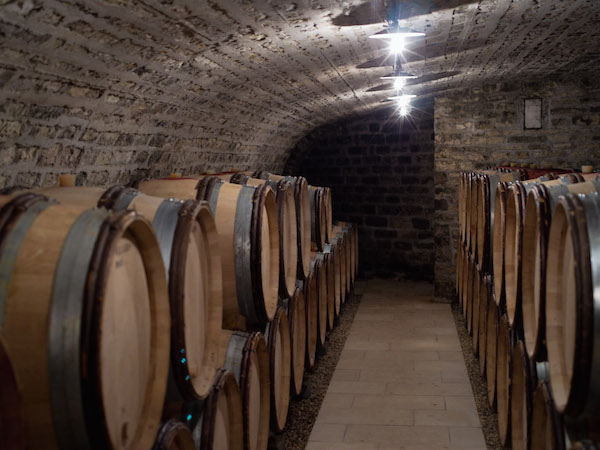
Barrel tastings in situ are a much better opportunity to judge wines individually and form a view on the vintage overall. Unsurprisingly the wines showed much more consistently than they had done in London.
If you can taste alongside prior vintages, as we did on a few occasions, that’s all the better as it provides useful context.
Comparisons have been drawn with previous vintages by commentators, notably 2005 and 2009 (presumably due to the hot summers they all have in common).
The producers don’t agree. 2009s show in a bigger, atypical mould. 2005s are considerably more tannic, built for the very long term, and most will need a good while yet. A few producers see 2005 as the greatest vintage of their generation, but many more look to 1999 as their benchmark.
2015 has the fruit and accessibility of 2012, with more volume and structure, and seemingly similar PHs. It’s an alluring vintage without the generally slacker character of 2009. Most of the successes were picked early, before the rains on 10th September. But some held off and still produced lovely wine. Others who harvested after the 10th have wines that seem to me to be too sweet, perceptibly lower in acidity and have less fine tannins. For the majority that were successful, the watchword was very little or no punching down, almost everyone opting for gentle extractions.
Some producers went for a high proportion of whole bunch fermentation. Those practising the inclusion of whole bunches do so to add an extra sense of freshness and complexity. It’s worth pointing out that stems actually slightly increase the PH, so lowering acidity in the finished wine. But they also contribute different, plant-derived flavours such as eucalyptus and mint, and it’s possibly this that gives the impression of making the wine feel light-footed. Perhaps the marginal lowering of acidity also contributes to a silkier mouth feel. Theoretically whole bunches also add a bit of structure, but I’d guess it depends on what percentage is used and often you don’t sense it.
Having tasted plenty of wines with and without whole bunches, it does seem that a common aspect of the vintage character is the silkiness of the tannins that are present irrespective of these types of winemaking decisions.

Another facet of 2015 is its lovely concentration. Pinot Noir excels in vintages that aren’t bountiful. Yields in 2015 were generally lower than in 2014, 1990 or 1999. This was especially true of the Cote de Beaune because the vines hadn’t fully recovered from the stressing effects of hail in the preceding years.
2015s are fruity, rich, with good density and show definition. On balance I personally preferred cooler sites – due to location, aspect or being in a windy spot. But others will favour out-and-out richness and a broad-shouldered character from the warmer sites. We all have our palate preferences and that’s as it should be. In any case there are no universal rules to successful buying in 2015 since the different vineyard characters shine through.
The greatest relative successes are the lesser appellations. There are some truly superb Bourgogne rouge and village level wines. You’d be seriously missing out if you just focus on trophy wines.
Village wines in 2015 are priced similarly to the levels of Premier Crus from just 2 vintages ago. Grand Crus are up by a third in many cases. If you go long on 2015 now and choose to rationalise in a few years’ time, there are no guarantees that you’ll get your money back.
If you ask which were my favourite communes in 2015 that especially shone, I’d plump for Pommard, Aloxe-Corton, Chambolle-Musigny, Morey-St-Denis and Gevrey-Chambertin.
Nevertheless, I was delighted by lovely wines from Auxey-Duresses, Santenay and Volnay. I thought Nuits-St-Georges and Vosne-Romanée were stunning successes in 2014, and it was no surprise that they showed at least as superbly in 2015.
By now you’ll have formed the impression that 2015 is a great vintage across-the board. Indeed it is. Yet not everyone is happy.
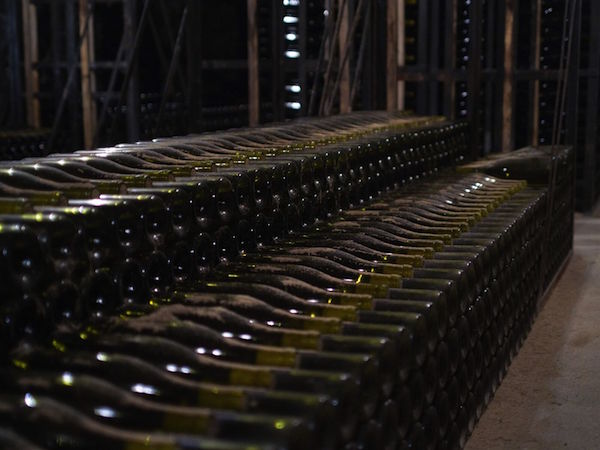
A proportion of long-term collectors are refusing their allocations this year for the first time, which may tell us something about the sustainability of these levels. Some of those ‘given up’ allocations are going to overseas buyers who spend vast annual sums with the big London merchants. But Burgundy producers are well aware of the grey market of en primeur releases originating out of the UK. For now, they are tolerant of it, but for how much longer?
Many merchants are concentrating allocations in the hands of their wealthiest buyers who spend by far the most throughout the rest of the year. And when I say spend, I mean spend. Their dependence on wine investors or wine accumulators makes it harder for them to allocate widely, and correspondingly difficult for Burgundy lovers to gain access to many Grand Crus and Premier Crus. In that fundamental sense the market has changed out of all proportion.
Overall takings at the 2016 annual Hospices auction were down 25% on the previous year (although it’s worth remembering the historic 2015 auction record was in aid of the Paris victims of the IS-inspired atrocities). There is less of 2016 to go around due to the catastrophic late April frosts from the tip to almost the toe of the Cote D’Or, but the quality of what was made is very good and it’s another warm vintage.
If you’re UK based, one other thing to consider is that the Sterling Euro exchange rate will be volatile over the next couple of years, and many will be betting against the Euro during this timeframe. Presidential election results in France in 2017 could have a major impact on the Euro’s relative strength or weakness.
With this in mind, and given the extremely high release prices in the UK for 2015 Burgundy, it’s worth revisiting 2014 for all those who held back.
With a few months or more in bottle, the red wines are showing superbly, with dark, ripe fruit, excellent minerality and sufficient structure to assure medium to longer term drinking.
2014 is a good vintage. It’s a more classic red Burgundy vintage than 2015, majoring on its lovely balance. Based on these tastings, I am delighted to have bought so much of it.
2014 white wines have wonderful intensity, and though enjoyable for their terrific concentration already, are going to age beautifully. I’ll be laying down my best bottles for 15 or more years, but will surely be tempted to dip in regularly along the way.
2013 was plagued by miserable weather. Producers needed to battle the elements, along with mildew and rot. They had to work assiduously all the way through. Perhaps because of this the best producers are proud of their achievements. Reds 'pinottent', that is to say they show fine, overt varietal expression in a really fresh, lifted mid-weight style, with one proviso: just so long as vineyard husbandry was top notch the wines were able to draw energy from the life of the soil and yields were managed to concentrate the berries.
2013 reds may be mid-weight, but the best have a lovely ethereal intensity, and village wines are starting to drink already; they have none of the hardness and excoriating acidity of 1996, or the sharpness of 2006. Tasted 2 years ago as barrel samples 2013s were particularly taciturn, rather dry and mute, as you might imagine the product of such filthy weather. Today they are transformed.
However much the 2015 white wines are being talked up as being fresher than one could have imagined given the heat of the year (and they are), they are simply not in the same class as 2014. They lack the same degree of definition, intensity and breeding with which that vintage is blessed.
With prices increasing for whites too, there’s really very little reason to go long on them this year, and it’s noticeable that recent merchant emails contain a lot more white wines still on offer compared with the mostly sold-out reds. I’ve only bought a few affordable cases for nearer term drinking, and thought the best vineyard sites of Mercurey in the Cote Challonaise showed particularly well. But I’ll be drinking them well before my 2014s.
As a parting footnote, don't overlook Moulin-a-vent in the Beaujolais. From the red granite soils of the appellation’s best terroirs and in the able hands of top Cote D’Or producers, Gamay shows what it can create: truly a noble grape.
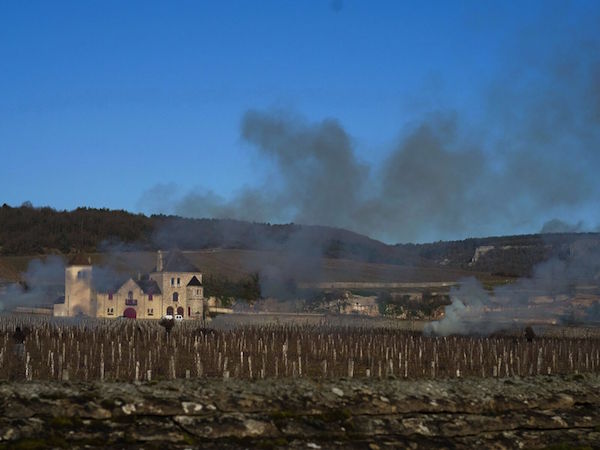
by Wine Owners
Posted on 2014-02-22
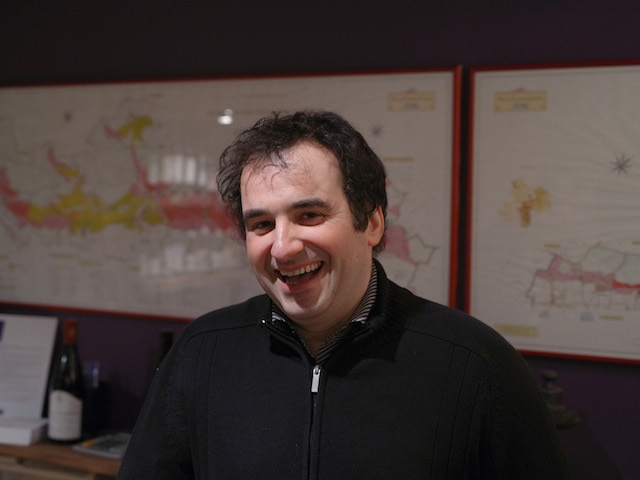
By Jean-Marc Vincent
Following a 2012 vintage of outstanding quality but with quantities commonly down 50%+, growers were hoping for a more bountiful 2013. Sadly it was not to be. Burgundian vignerons have had just cause to complain (regarding yields) since the start of the decade, with yet more reasons in 2013.
Winter had been long, spring was cold and rainy followed by an irregular summer of hot interludes interspersed with colder, wet weather. The harvest could only start at the beginning of October in most of First floors across the Côte d’Or.
A cold and wet spring had led to coulure and millerandage, with hailstorms proliferating the spread of mildew and oidium resulting in much reduced yields at harvest.
From North to South, no region was spared. Really low yields resulted in overall volumes equal to or less than 2012 (1.26 million hl). Fortunately the quality evident at the end of the harvest was good, even if far more heterogeneous than in 2012.
THE SEASONS
Winter started late. From January to March, temperatures stayed cool. The beginning of spring was also very chilly and prevented the vine from starting – causing almost 2 weeks of delay.
In early May, when the first buds finally appeared, heavy rains hit the region in waves. Plots from the lower slopes were totally flooded during the course of a week. Temperatures came close to causing frosts. We came within an inch of disaster repeatedly.
In June, the cold temperatures and rain were incessant, leading to a 3 week-late flowering. Coulure and millerandage reduced the crop significantly, at times by half. The hot, dry and sunny start of summer reassured and benefited the vine. It encouraged a good finish to the plants’ growth phase.
The last fortnight of July suffered from a violent storm in the Côte de Beaune (1,350 ha were hit on the 23rd of July). August was irregular and finally the ripening of the grapes kicked off.
September didn’t spare the the vines either. Mild temperatures and and regular rain led to rot (Botrytis ), which spared the well ventilated bunches of little berries in the case of pinot noir (millerands). The choice of the harvest date was to prove crucial. It was essential to wait for a proper maturity and then pick each plot really quickly.
THE WINES
The vintage was a difficult one and favoured the most serious, meticulous, and cool-headed! Vignerons who worked thoroughly back in May – the moment when those who took the necessary risks of making a small harvest for the 4th year in a row – will release high quality wines.
The low yields explain the quality-to-be of the best cuvées. The whites are taut but not agressive and have an amazing minerality thanks to a chilly month of August which preserved acidity, minerality and their aromatic complexity. The bunches of pinot noir were really millerandées (small berries which tend to proliferate on older vines), extremely wholesome and help explain the unexpected level of quality in such a cold vintage. At the best addresses, the reds are aromatic, showing freshness and length.
In the end, 2013 is promising to be a very classic burgundy vintage that should interest enthusiasts.
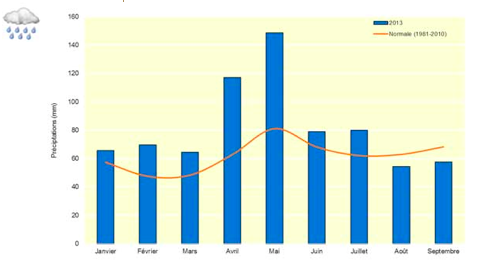
Jean-Marc Vincent is a brilliant, thoughtful, meticulous vigneron based in Santenay, who together with his delightful wife Anne-Marie, are producing fabulously pure wines that age beautifully at their tiny domaine. His 2012s are exceptional.
Original French version:
Après une année 2012 de grande qualité mais qui n’avait donné bien souvent que la moitié d’une récolte normale, les vignerons de Bourgogne espéraient une année 2013 plus généreuse. Et bien non! Les vignerons bourguignons n’ont pas fini de se plaindre du début de cette décennie et particulièrement de 2013.
L’ hiver a été long, le printemps froid et pluvieux suivi d’un été irrégulier ou des périodes de chaleur ont été suivies par un temps plus froid et humide. Les vendanges n’ont pu démarrer que début octobre dans la plupart des vignobles de Côte d’Or.
Un printemps froid et humide a entrainé coulure et millerandage, orages de grêle, attaques de mildiou et d’oïdium, ce qui a fortement réduit les quantités récoltées.
Du nord au sud, aucune région viticole n’a été tout à fait épargnée. De très petits rendements ont donné un volume égal voire inférieur à celui de 2012 (1,26 millions d’hectolitres1). Heureusement, la qualité, quoique plus hétérogène qu’en 2012 est souvent au rendez-vous à l’issue des vendanges.
LES SAISONS
L’hiver a été tardif en Bourgogne. De janvier à mars, les températures restent fraîches. Le début du printemps est lui aussi très frais et empêche la vigne de démarrer, avec au final près de 2 semaines de retard.
Début mai, alors que les premiers bourgeons apparaissent enfin, des pluies importantes tombent fréquemment sur la région. Des parcelles de bas de coteaux sont complètement inondées pendant une semaine. On frise la gelée et la destruction complète de récolte plusieurs fois.
En Juin, le froid et la pluie persistent, entraînant un retard de floraison d’environ 3 semaines. Coulure et millerandage réduisent la récolte considérablement, parfois de moitié. Le début d’été, chaud, sec et ensoleillé rassure et profite à la vigne. Il permet d’obtenir une bonne fin de croissance.
La deuxième quinzaine de Juillet est marquée par un violent orage de grêle sur la Côte de Beaune (1 350 ha touchés le 23 juillet). Août est irrégulier et enfin la maturation des raisins commence.
Septembre ne ménage pas les vignes. La douceur ambiante et les pluies régulières favorisent la pourriture (Botrytis), limitée sur les grappes aérées constituées de petites baies dans le cas du pinot noir. Le choix de la date de récolte est essentiel. Il faut savoir attendre une vraie maturité et ensuite vendanger très rapidement chaque parcelle.
LES VINS
Le millésime a été difficile et va révéler les vignerons les plus sérieux, les plus assidus et avec le plus de sang-froid! Tous les vignerons ayant fait le choix en mai d’un travail soigné et ayant pris le risque de faire pour la quatrième fois de suite une petite récolte vont signer des vins de très bonne qualité.
Le faible rendement va expliquer la qualité des meilleures cuvées. Les blancs sont tendus mais pas agressifs et bénéficient d’une minéralité exceptionnelle du à un mois d’août frais qui a préservé les acidités, les minéraux et même les arômes. Les grappes de pinot noir étaient très millerandées, très saines et expliquent un niveau de qualité inattendu dans un millésime aussi frais. Chez les meilleurs producteurs, les vins rouges sont aromatiques, avec de la fraicheur et de la longueur.
Au final, un millésime bourguignon très classique et recommandé aux vrais amateurs de vins de Bourgogne.

